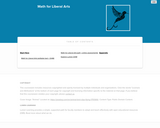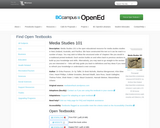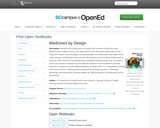
Mathematics Vision Project: Secondary Math One Student Edition Module 5
- Subject:
- Mathematics
- Material Type:
- Textbook
- Provider:
- Mathematics Vision Project
- Provider Set:
- Secondary Math I
- Date Added:
- 08/17/2018

Mathematics Vision Project: Secondary Math One Student Edition Module 5

Mathematics Vision Project: Secondary Math One Student Edition Module 6

Mathematics Vision Project: Secondary Math One Student Edition Module 7

Mathematics Vision Project: Secondary Math One Student Edition Module 8

Mathematics Vision Project: Secondary Math One Student Edition Module 9

Mathematics Vision Project: Secondary Math One Teacher Notes Introduction

Mathematics Vision Project: Secondary Math One Teacher Notes Module 1

Mathematics Vision Project: Secondary Math One Teacher Notes Module 2

Mathematics Vision Project: Secondary Math One Teacher Notes Module 3

Mathematics Vision Project: Secondary Math One Teacher Notes Module 4

Mathematics Vision Project: Secondary Math One Teacher Notes Module 5

Mathematics Vision Project: Secondary Math One Teacher Notes Module 6

Mathematics Vision Project: Secondary Math One Teacher Notes Module 7

Mathematics Vision Project: Secondary Math One Teacher Notes Module 8

Mathematics Vision Project: Secondary Math One Teacher Notes Module 9

This course was originally developed for the Open Course Library project. The text used is Math in Society, edited by David Lippman, Pierce College Ft Steilacoom. Development of this book was supported, in part, by the Transition Math Project and the Open Course Library Project. Topics covered in the course include problem solving, voting theory, graph theory, growth models, finance, data collection and description, and probability.

Media Studies 101 is the open educational resource for media studies studies in New Zealand, Australia, and Pacifica. We have constructed this text so it can be read in a number of ways. You may wish to follow the structured order of 'chapters' like you would in a traditional printed textbook. Each section builds on and refers back to previous sections to build up your knowledge and skills. Alternatively, you may want to go straight to the section you are interested in -- links will help guide you back to definitions and key ideas if you need to refresh your knowledge or understand a new concept.

Medical Terminology is a language class. The language we are learning is Medical English, a form of English used by medical professionals worldwide to communicate with one another. When medical professionals communicate with patients, a translator is sometimes required because not all people speak Medical English.
By the time you finish this course, you will be fluent in Medical English.
Like all language courses, the best way to learn is by immersion. In Unit 1, to teach you word building, we will flood your brain with Medical English words. In Units 2 and 3, we will cover some of the details of Medical English common to all organ systems. In Units 4 through 12, we will devote a Unit to each of the body’s organ system and introduce Medical English words that are specific to that organ system.
In each Unit, you will be given a table of root words, a table of prefixes, and a table of suffixes. Then you will be given a word list that combines those root words, prefixes, and suffixes into new Medical English words.

Medicines By Design aims to explain how scientists unravel the many different ways medicines work in the body and how this information guides the hunt for drugs of the future. Pharmacology is a broad discipline encompassing every aspect of the study of drugs, including their discovery and development and the testing of their action in the body. Much of the most promising pharmacological research going on at universities across the country is sponsored by the National Institute of General Medical Sciences (NIGMS), a component of the National Institutes of Health (NIH), U.S. Department of Health and Human Services. Working at the crossroads of chemistry, genetics, cell biology, physiology, and engineering, pharmacologists are fighting disease in the laboratory and at the bedside.

Microbiology covers the scope and sequence requirements for a single-semester microbiology course for non-majors. The book presents the core concepts of microbiology with a focus on applications for careers in allied health. The pedagogical features of the text make the material interesting and accessible while maintaining the career-application focus and scientific rigor inherent in the subject matter. Microbiology’s art program enhances students’ understanding of concepts through clear and effective illustrations, diagrams, and photographs.